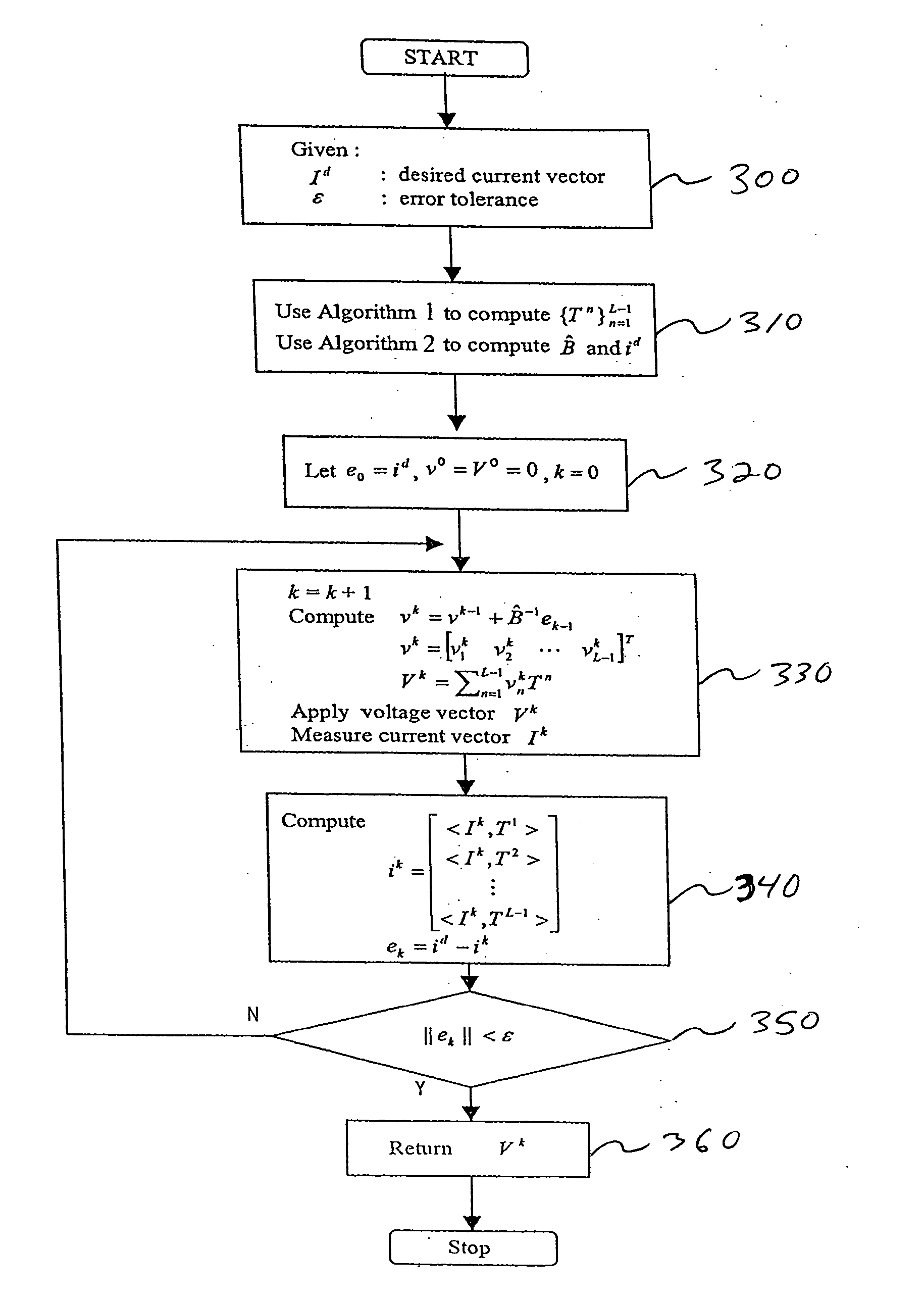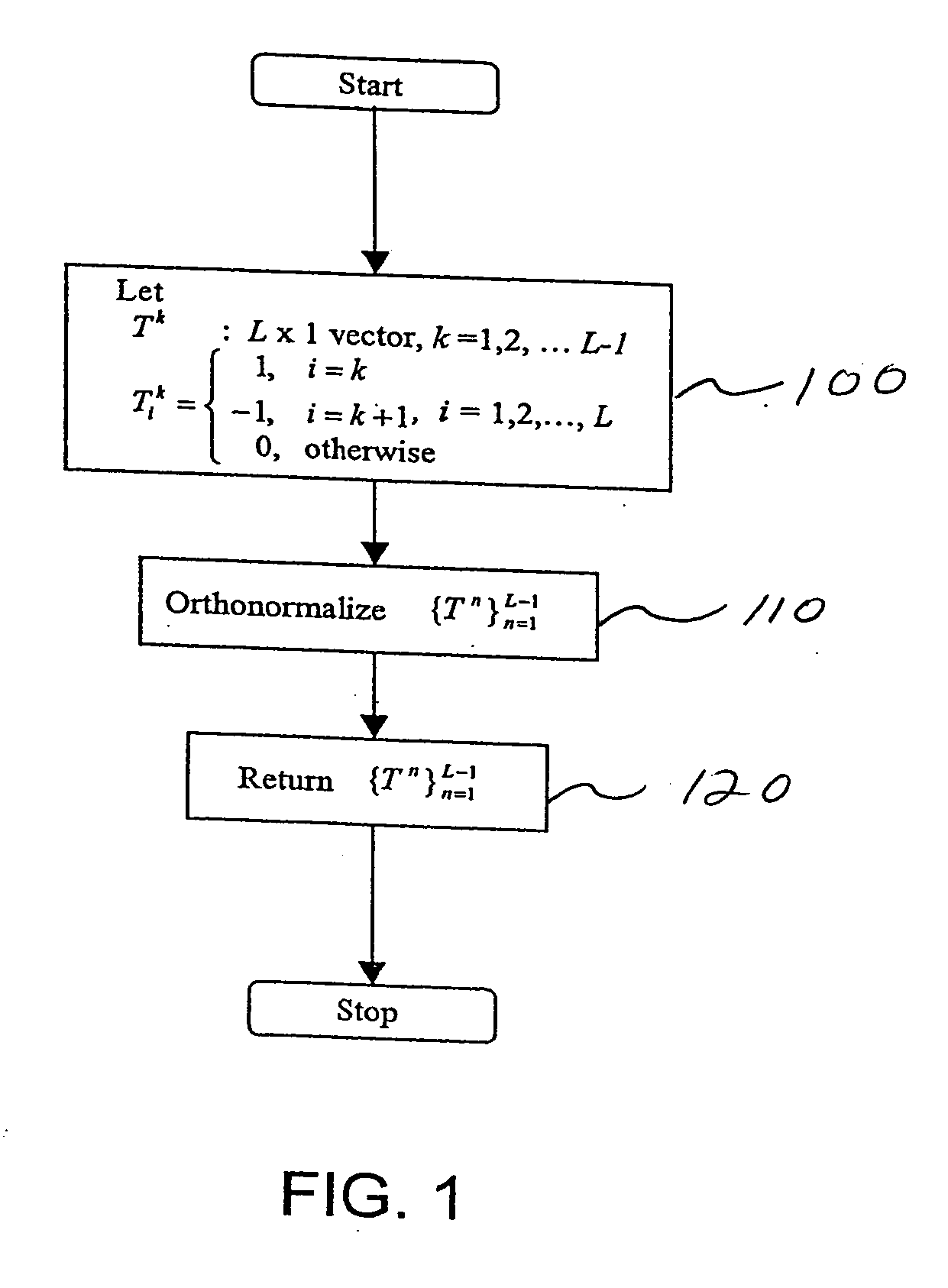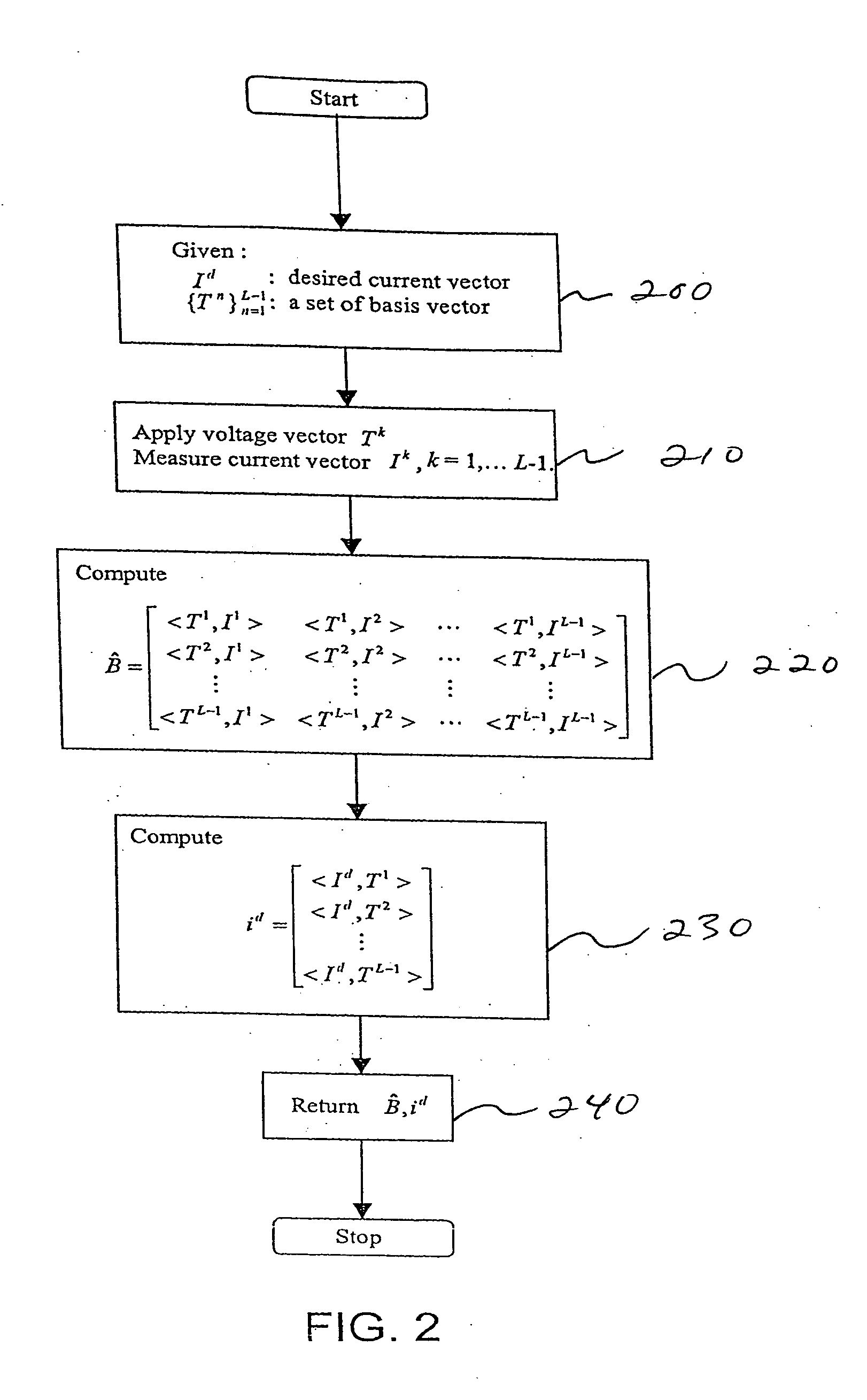Iterative approach for applying multiple currents to a body using voltage sources in electrical impedance tomography
a technology of electrical impedance tomography and multiple currents, applied in the field ofeit, can solve the problems of small changes in currents or voltages at the surface, difficult and expensive construction of current sources, and reconstruction problems
- Summary
- Abstract
- Description
- Claims
- Application Information
AI Technical Summary
Benefits of technology
Problems solved by technology
Method used
Image
Examples
Embodiment Construction
[0027] For the purpose of explaining the present invention, let I=(I1, I2, . . . Il)T denote an L×1 electrode current vector where In is the current value on electrode n, and L is the number of electrodes. Similarly, let V=(V1, V2, . . . Vl)T denote an L×1 electrode voltage vector. The mapping from the applied electrode voltage V to the measured electrode current I can be represented using a constant L×L matrix A, so that I=AV, provided that the change with time in the electrical conductivity of human body under examination is assumed to be negligible or the change is slow compared to the fast sampling time of the measurement data. Since the magnitude and the phase of the currents and voltages are used in the conductivity and permittivity reconstruction, the elements of I, V and A are complex numbers.
[0028] The goal is to compute voltage Vd that will generate the desired electrode current pattern Id. The exact value of A can not be determined. The estimate of A, denoted as Â, can b...
PUM
 Login to View More
Login to View More Abstract
Description
Claims
Application Information
 Login to View More
Login to View More - R&D
- Intellectual Property
- Life Sciences
- Materials
- Tech Scout
- Unparalleled Data Quality
- Higher Quality Content
- 60% Fewer Hallucinations
Browse by: Latest US Patents, China's latest patents, Technical Efficacy Thesaurus, Application Domain, Technology Topic, Popular Technical Reports.
© 2025 PatSnap. All rights reserved.Legal|Privacy policy|Modern Slavery Act Transparency Statement|Sitemap|About US| Contact US: help@patsnap.com



